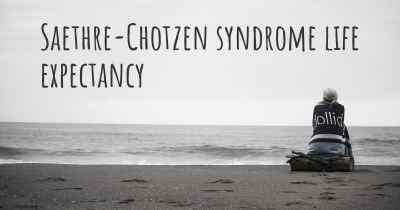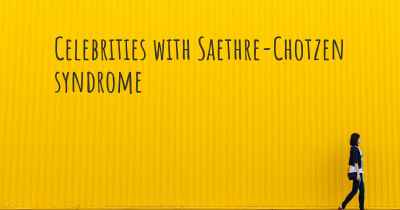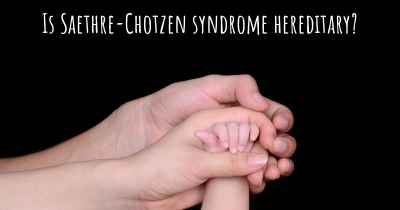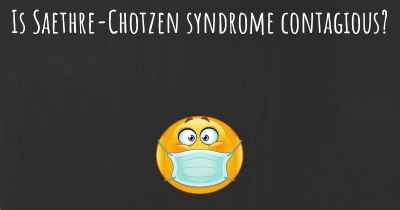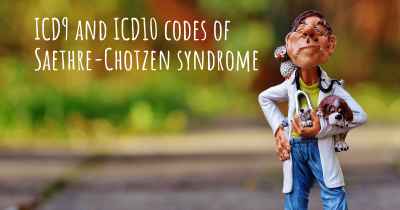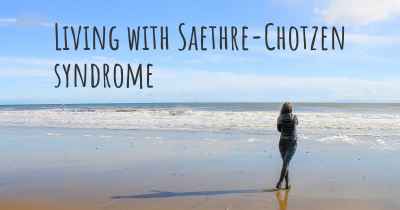What is the history of Saethre-Chotzen syndrome?
When was Saethre-Chotzen syndrome discovered? What is the story of this discovery? Was it coincidence or not?
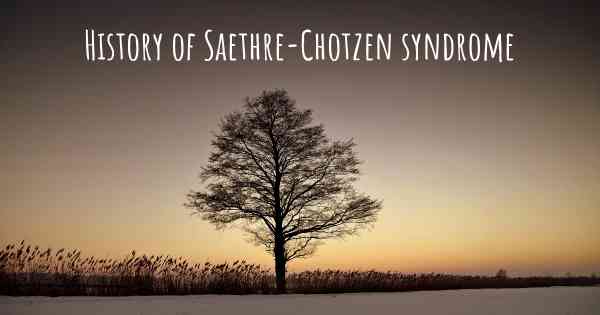
Saethre-Chotzen syndrome, also known as ACS3, is a rare genetic disorder characterized by craniosynostosis, which is the premature fusion of certain skull bones. This condition affects the development of the head and face, leading to various physical and sometimes cognitive abnormalities. Saethre-Chotzen syndrome was first described in the medical literature in 1931 by two separate physicians, Saethre and Chotzen, who independently reported cases with similar features.
The history of Saethre-Chotzen syndrome dates back to the early 20th century. In 1931, Dr. Saethre, a Norwegian physician, published a case report on a family with multiple affected members. He described the characteristic features of craniosynostosis, facial asymmetry, and hand abnormalities. Around the same time, Dr. Chotzen, a German physician, also reported similar cases with overlapping symptoms. These two physicians were the first to recognize and document the distinct clinical features of this syndrome.
Over the years, further research and clinical observations expanded the understanding of Saethre-Chotzen syndrome. It was determined to be an autosomal dominant disorder, meaning that a mutation in a single copy of the responsible gene is sufficient to cause the condition. The gene associated with Saethre-Chotzen syndrome was identified as TWIST1 in 1997. Mutations in this gene disrupt normal development and lead to the characteristic features of the syndrome.
Since the initial descriptions, numerous cases of Saethre-Chotzen syndrome have been reported worldwide. The prevalence of the syndrome is estimated to be around 1 in 25,000 to 50,000 individuals. It affects both males and females, although there may be some differences in the severity and presentation of symptoms between the two sexes.
The clinical features of Saethre-Chotzen syndrome can vary widely among affected individuals. The most common characteristic is craniosynostosis, which typically involves the fusion of the coronal sutures of the skull. This premature fusion can lead to an abnormal head shape, such as a prominent forehead, asymmetry, or a triangular appearance. Other facial abnormalities may include low-set ears, ptosis (drooping eyelids), a small or underdeveloped jaw, and a high-arched palate.
Hand and limb abnormalities are also common in Saethre-Chotzen syndrome. These can include syndactyly (webbing) of the fingers, brachydactyly (short fingers), and clinodactyly (abnormal curvature) of the fifth finger. Additionally, individuals with Saethre-Chotzen syndrome may experience developmental delays, learning difficulties, and hearing loss.
Diagnosis of Saethre-Chotzen syndrome is typically based on clinical evaluation and genetic testing. Imaging studies, such as X-rays or CT scans, may be used to assess the extent of craniosynostosis and evaluate the skull and facial structures. Genetic testing can confirm the presence of mutations in the TWIST1 gene.
Treatment for Saethre-Chotzen syndrome is multidisciplinary and aims to address the specific symptoms and complications of each individual. Early intervention is crucial and may involve surgical correction of craniosynostosis to allow for normal brain growth and development. Additional surgeries may be required to correct facial abnormalities or hand anomalies. Speech therapy, occupational therapy, and educational support can help manage developmental delays and learning difficulties.
While Saethre-Chotzen syndrome is a lifelong condition, with appropriate medical care and support, individuals with the syndrome can lead fulfilling lives. Ongoing research continues to improve our understanding of the underlying genetic mechanisms and potential treatment options for this rare disorder.
